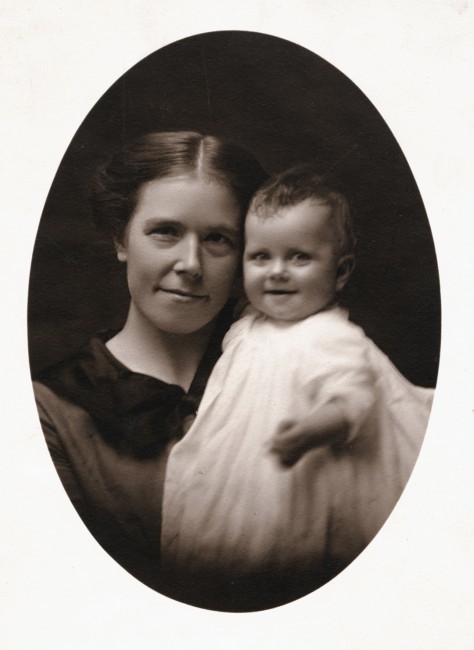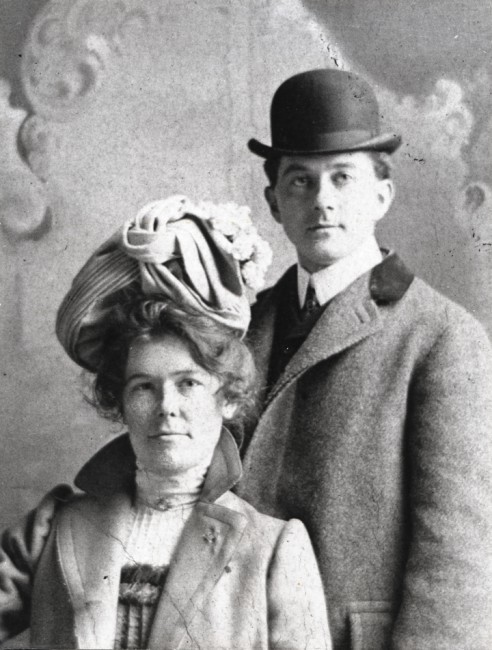Early Life
Dorothea Tanning was born in 1910 in the small college town of Galesburg, Illinois, to her parents Amanda and Andrew Tanning, Dorothea, named after her maternal grandmother, was the middle child of her family with two sisters. Her life was filled with women, and from the most was a really traditional upbringing, nothing to push her into the field she found but she still thought fondly of this time. Below is a collection of excerpts from her second autobiography Between Lives: An Artist and Her World where she briefly discusses different parts of her childhood compared to Max Ernst's childhood wishing that hers had been a bit more excited.
“But what could I tell, what was there in my childhood to compare with storybook Rhineland and little Max Ernst in his nightie looking for the railroad tracks and falling in with a procession of fanatics who called him baby Jesus?”
“How could Galesburg, Illinois, in the 1910s to the ‘20s a place where you sat on the Davenport and waited to grow up, compare with Cologne; it's mighty cathedral shedding glass lambencies that fell about children shoulders like jeweled capes, turning them into princes and poets? My early memories surfaced, wavered through time, riled the stream — bloated forgotten fantasies rising in murky fluids. But almost always the wrong ones. I fish for the vital statistics; even decisive events saluted me like soap in the bath water. I was born, yes and ran fast but never away. When I was seven I drew a figure with leaves for hair. Was I a tiny surrealist? Are all children surrealists, visually.”
“Somewhat later, aged eleven, it seemed important to share my élan. One of the ways to bring enrichment to other minds is to set up a lending library, which I did in our abandoned chicken house. The library was stocked with my own and my sister's books, and these the neighbor children were invited to borrow and thus to read.”
“Could he possibly want to hear about my mother, whose most distinguishing trait was simply her motherness? Could he want to know that this patient single mining minded being loved life instinctively as filtered through her children (three) — the loyalty and pride in her husband being innate and foregone? How could a tiny artist grow into a big one without that quilt of maternal love with its pattern of solace for hurts, it's curving comfort, cloud-soft, its consolation for having to exist, it’s sweet smell?”
“My father, a model husband and parent, was at the same time mostly absent, forever immersed in his old tombs of history and geography, conveniently distanced from the domestic details. Understandably, for his was a household of women, including those who didn't already live there. They would show up with faithful regularity and wardrobe trunk for long stays strengthening thereby the feminine holding the place.”
Tanning, Dorothea. Between Lives: An Artist and Her World. 1st ed. New York; London: W.W. Norton, 2001. pgs 15-19.
After finishing high school, she went on to attend college in her hometown at Knox College for two years before quitting and deciding to pursue an art career in Chicago. After around 5 years in Chicago, she moved to New York in, where she was introduced to the world of surrealism when she attended an exhibit in 1936 at the Museum of Modern Art called Fantastic Art, Dada and Surrealism. While living in New York she worked as a commercial artist producing advertisements and was briefly married to a writer named Homer Shannon. After a trip abroad to Europe, she returned to New York and started working for Macy's producing fashion advertisements this lead to her meeting the gallery owner Julien Levy when the art director at Macy's showed Levy some of her work. Levy loved her work and offered to show her in his gallery, she later became good friends with Levy and his partner, Muriel Streeter, Levy even went on to give Dorothea two different solo exhibitions. It was this new friendship that led to Dorothea meeting a group of surrealist artists that included at least one notable name, Max Ernst.

